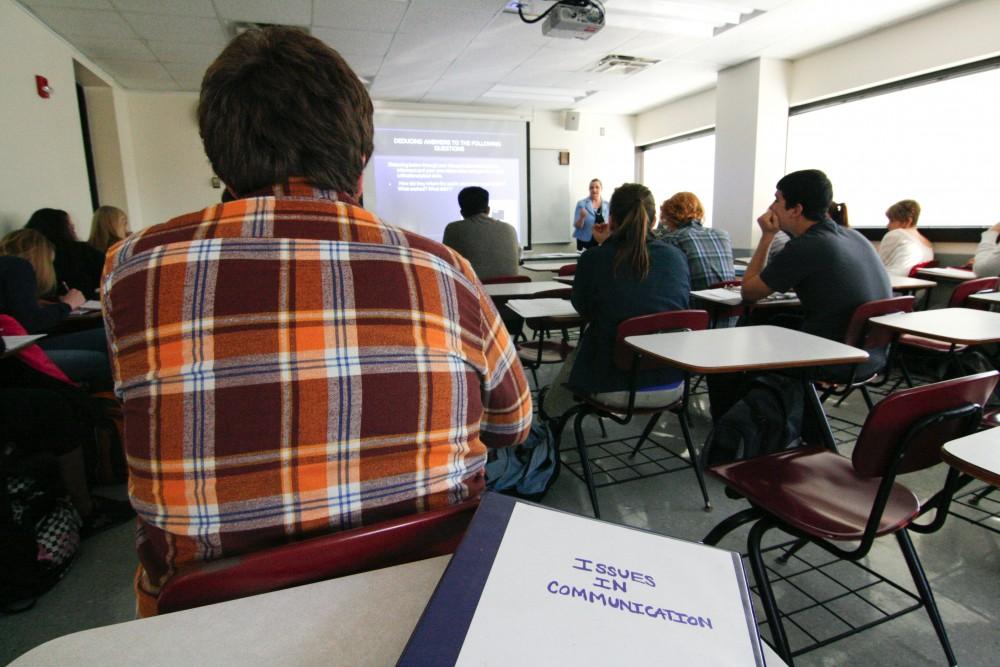School of Communications students join to learn about social change

GVL / Andrea Baker Issues in Communication taught by Dr. Linda Welker
Oct 17, 2011
Students of many different majors in the School of Communications find themselves gathered together in one classroom for their capstone course, “Issues in Communication.”
The fundamental issue of the Grand Valley State University course is stated in bold on the first page of the syllabus: “How do (or can) we communicate to make the world a better place?”
Linda S. Welker, a GVSU communications professor, teaches three sections of COM 495 and said she hopes her teaching of the course will inspire students to use their communication abilities to become more involved in the world around them.
“I believe that what they learn through this course will help them to use their communication skills ethically and responsibly,” Welker said. “I’m heavily involved in communication activism and as a professor I hope to share that sentiment to my students.”
COM 495 is a culmination of past studies of communication. As a capstone, the COM 495 course is aimed to help students in their post-collegiate life to be good citizens of the world, plan their careers and become well-rounded, well-informed individuals.
“This class allows students to delve into the different aspects of communication and learn which method to apply to individual situations,” said Aquoinette Blair, a GVSU student in a section of Welker’s class.
An important aspect of the course is “deliberative discourse,” in which students critically analyze situations in the public domain using select theories of communication as lenses.
“They’re responding well to the course,” Welker said. “It’s academically rigorous, but they’re thinking critically and seem to be taking a lot out of it.”
Students will write an integrative paper discussing the communication efforts of an organization after they have learned how to audit real-life communication.
Welker’s students are involved with more than 80 organizations, dealing with issues such as domestic abuse, HIV/AIDS, poverty, refugees, immigrants, human trafficking and more. All are social action organizations that use communication as an important tool in their endeavors.
“We can complain as much as we want about how the media is unfair or perpetuates unfair systems, but this class makes it apparent that communications students will one day be the media and will have the however to make our messages positive,” said Randy Strobl, a COM 495 student.
For the organizations that the students are analyzing, effective communication is key to success.
“Awareness begins with communication,” said Saundra Lawson, president of Project Liberty, a group advocating against human trafficking. “Communication should move us to action—action to take a stand and be a voice for the voiceless.”
Welker added that some students have changed career paths or found new opportunities through their work in the COM 495 course. One film major in one of her previous classes did documentary work and then decided to pursue a career advocating social action.
“Welker has created a very interesting, but quite difficult course,” said Anna Jennings, a theater major. “But after studying many disenfranchised groups and advocacy organizations I do feel empowered and the desire to help in any way that I can.”

























